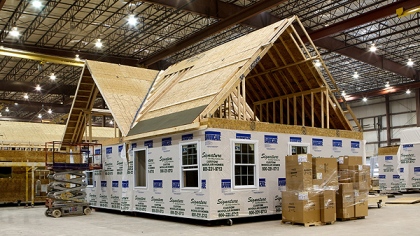Construction Loan Center
Permanent Mortgage for Newly Constructed Homes

You have just completed the building of your new dream home and the Certificate of Occupancy has been received, but instead of opting for a Construction to Permanent Loan when you began the process, you chose to finance the building of the home separate from the end loan or final mortgage. There are several factors to keep in mind when you are in this position:
1) The construction loan you have is an interest only loan for the purposes of building the home, which includes an escrow fund for unexpected building costs and may be interest reserve, and because it is an interest only loan, none of the principal is being paid down on the loan. The typical interest only construction loan only can be used for 6 months to one and a half years. At that point, permanent financing must be obtained.
2) There are many options available for you to choose from. One can opt for a conventional, conforming loan with terms of 10,15,20,25 and 30 years. The question you must ask yourself is how long you intend on living in the home. Although the payments are higher with short term fixed rate mortgages, when you sell the home, you will have a stronger equity position in the home. Longer term loans, on the other hand afford you a lower payment, but less equity when you sell the home.
3) Another type of loan is an Adjustable Rate Mortgage. The payment is determined using a 30 year amortization for the time that the rate is in the fixed period. An example follows:
$100,000 loan amount
5/1 ARM rate: 3.2%
Payment for the first 5 years: $432.57 (does not include escrows for taxes or insurance)
Qualifying rate: 9.2%
Qualifying Payment $819.05 (does not include include escrows for taxes or insurance)
This assumes that the maximum rate cap is 6% above the initial payment rate of 3.2%
Remember to include taxes and insurance payments monthly to determine the front end debt to income ratio. This ratio typically cannot exceed 28% of the total gross monthly income.
4) Regulatory Issues:
In the wake of the mortgage crisis of 2008, there were many changes to the lending industry due to the many predatory lending schemes that were prevalent, and because many lenders were violating ECOA, FIRREA and many other regulations. The Dodd-Frank Act affords the borrowing public many protections which are enforced by the CFPB that which, prior to 2011, laid bare many borrowers open to fraud and legitimate lenders open to lawsuits. It is your responsibility to check with the National Mortgage Licensing Service the status of the loan officer’s license as well as the company who is employing him. If you find sanctions from the state or federal authorities, you might be wise to find a different lender.
5) Legal Issues:
At the closing of the new loan, some states allow you to close utilize the services of a title agent or attorney, while some require an attorney to conduct the closing. At the time of closing, the attorney or title agent will have completed a title review to clear up any problems that could encumber the title to the property and ensure that the closing is conducted smoothly and efficiently. The choice of an attorney or title agent is YOURS, not the lenders. If the lender has an affiliated business with a title agent, you can opt to use their service, but the lender cannot force you to use their agent due to potential conflict of interest issues.
Many construction lenders will offer the same alternative financing option for the take out loan if you opt for a construction to permanent loan in the first place which can wrap the entire lot purchase, soft and had costs into one closing saving time and closing costs.






